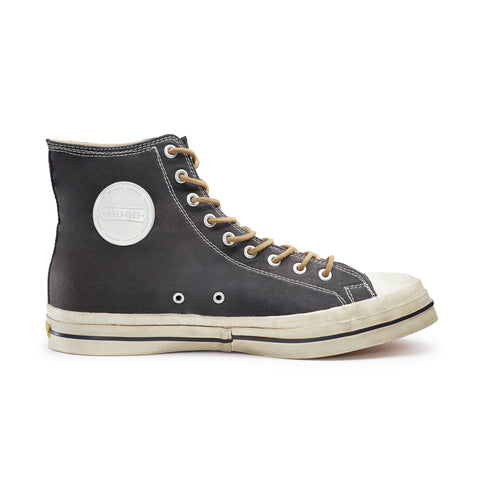1933
Foundation for success – Hyman Whitman, a Hood last-maker and product engineer, was a footwear consultant for the U.S. Armed Forces during World War I. From the study of anatomy and hundreds of medical reports, Whitman had concluded that the primary cause of tired, strained, or weakened foot and leg muscles was improper weight distribution.
Based on his findings, Whitman invented a rubber arch support that would keep body weight properly distributed in the shoe. The initial arch support was composed of soft, resilient foam rubber positioned directly against the plantar fascia, a tendon sensitive to external pressure and longitudinally set across the arch of the foot. The arch was designed to adapt itself to the tendon
while continuing to support the flexion and general motion of the foot.
On Dec. 5, 1933, Whitman and colleague Fred Drew received a patent for the arch. In 1936, they received an additional patent for a non-resilient molded rigid wedge that was added on the arch side of the foot, directly under the heel bone, for better stability. The combination of the original arch design, a molded insole board, and a wedged heel made their 1936 Unified Sole Arch Support patent the archetype of all modern athletic and orthopedic footbeds.
The 1936 patent, dubbed “Posture Foundation,” was one of the first patented footwear comfort technologies, which gave Hood and B.F. Goodrich sneakers an incredible competitive advantage.
Based on his findings, Whitman invented a rubber arch support that would keep body weight properly distributed in the shoe. The initial arch support was composed of soft, resilient foam rubber positioned directly against the plantar fascia, a tendon sensitive to external pressure and longitudinally set across the arch of the foot. The arch was designed to adapt itself to the tendon
while continuing to support the flexion and general motion of the foot.
On Dec. 5, 1933, Whitman and colleague Fred Drew received a patent for the arch. In 1936, they received an additional patent for a non-resilient molded rigid wedge that was added on the arch side of the foot, directly under the heel bone, for better stability. The combination of the original arch design, a molded insole board, and a wedged heel made their 1936 Unified Sole Arch Support patent the archetype of all modern athletic and orthopedic footbeds.
The 1936 patent, dubbed “Posture Foundation,” was one of the first patented footwear comfort technologies, which gave Hood and B.F. Goodrich sneakers an incredible competitive advantage.

